The Pashmina craft, which has its origins in Kashmiri traditional art, well-known for its magnificent handwoven fabrics created from the premium wool of Changra goats. These goats, mostly found in the Himalayan region, produce light-coloured, velvety wool. It is in high demand due to its opulent texture. Skilled artisans painstakingly handspin and handweave the fibers into shawls, and scarves, as part of the complex process of making pashmina. Beyond just technical proficiency, the craftsmanship represents a cultural legacy passed down through the years. Thus, with every item showcasing the rich history and expertise of Kashmiri artisans.
Fashionistas around have embraced the pashmina as a classic and sophisticated piece of jewellery that combines elegance and custom. Shawls and scarves made of pashmina wool have come to represent sophistication; they elevate both informal and formal clothing. For people who value the marriage of comfort and style, the lightweight and insulating qualities of pashmina make it an ideal option. Famous fashion designers regularly use pashmina in their creations. Thus, highlighting the timeless appeal of this wonderful fabric on catwalks of distinction.
Finest Cashmere from Ladakh
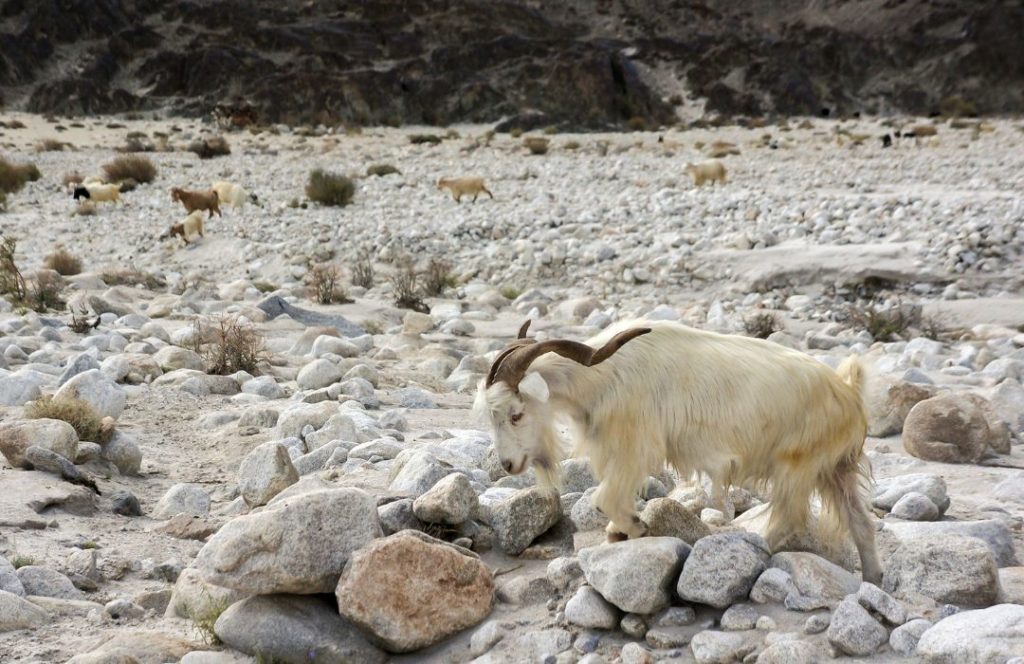
Ladakh is home to some of the world's best Cashmere wool because of its severe Himalayan topography and harsh weather. Native to this area, Changthangi goats yield "pashm," an opulent and incredibly soft fiber essential to the creation of fine Cashmere products. Ladakh's harsh weather and high elevations help these goats produce incredibly soft and cozy wool. Therefore, Ladakhi Cashmere basically a sought-after in the textile business.
Generation after generation of Kashmiri artisans have been extracting and weaving cashmere, resulting in a distinctive and culturally significant enterprise. To gather the priceless pashm fibers, the goats are painstakingly hand-combed by trained artisans throughout the moulting season. The resulting Cashmere, highly valued for use in the creation of gorgeous shawls and clothing due to its unmatched warmth and softness. The legend of Ladakhi Cashmere is a testament to the tenacity of the area. Also, an extraordinary quality resulting from the confluence of nature, tradition, and painstaking craftsmanship.
Qualities of Fine Cashmere
Ladakh cashmere, renowned for its superior quality, is comparable to exquisite cashmere in general. Among them are:
- Softness: The exceptionally soft and luscious texture of Ladakh Cashmere is well known.
- Luxury of warmth: It is perfect for chilly locations since it offers remarkable warmth.
- Lightweight: Ladakh Cashmere is warm, but it's still light enough to wear comfortably.
- Longlasting: Ladakh Cashmere items are made to last a long time because of their premium fibers.
- Porous: Facilitates appropriate airflow, averting overheating.
- No Piling: Prevents pills from forming and keeps a smooth appearance.
- Texture: Exhibiting smooth, fine fibers that add to the overall quality.
- Versatility: Fits well with shawls and sweaters among other clothes.
- Part of culture: The rich cultural legacy of the area so frequently reflected in Ladakh Cashmere.
- Craftsmanship: Items may display customary Ladakh-specific crafting methods.
Craft of Pashmina
Particularly in places like Kashmir and Ladakh, the Pashmina craft has its roots in the rich cultural tapestry of the Himalayan region. Fundamental to it all is the laborious and precise method of extracting the fine wool from the Changthangi goats. Shearing or combing the goats is the first stage in gathering the downy, delicate fibers from their underbelly. This basic ingredient, called pashm, serves as the basis for the opulent Cashmere fabric.
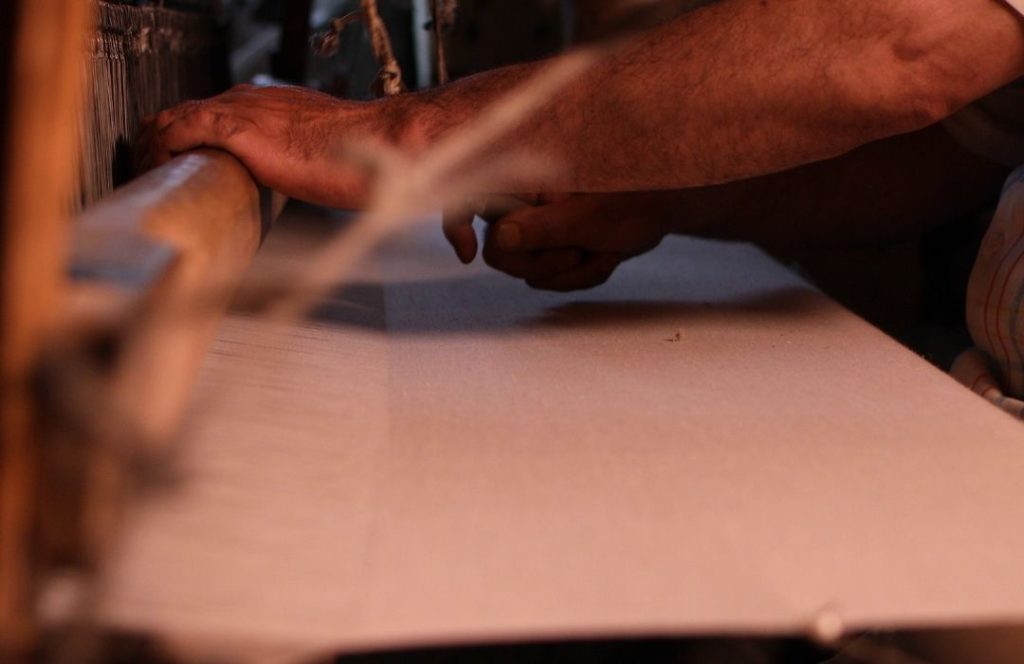
After being harvested, the Cashmere fibers go through a complex process carried out by trained craftspeople. The process of hand-spinning is an essential step in transforming fragile fibers into fine yarn. Thus, maintaining the natural warmth and softness that make pashmina so popular. The next step, the weaving process, where the distinctive shawls and scarves are made on antique handlooms. The artistry continues with dying, where skilled workers use synthetic or natural dyes to produce a range of hues, accentuating the beauty of the finished item.
Washing, blocking, and finishing touches are used in the last step to accentuate the Pashmina's wonderful features. Fashion fans around the world have been enthralled with the exquisite shawls, scarves, and blankets made from Cashmere wool. Mainly, transformed from raw wool through a sophisticated process that requires the artisan's talent, expertise, and attention to detail to preserve the material's authenticity and beauty. The Pashmina craft not only embodies a rich cultural legacy but also bears witness to the everlasting artistry of people committed to upholding a timeless custom.
Three Main Styles in Pashmina Craft
There are three styles in Pashmina Craft including Cashmere Wrap, Cashmere Scarf, and Pashmina Shawl
Cashmere Wrap
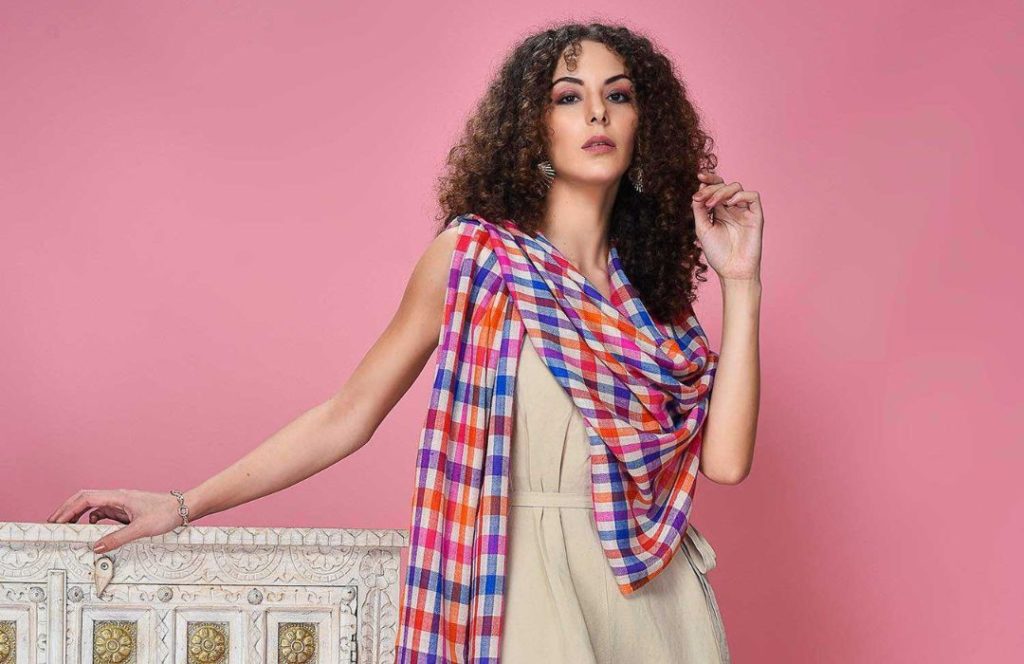
Cashmere wraps are the height of elegance and luxury; flexible pieces of clothing worn with anything to create a polished look. These wraps, renowned for their unparalleled softness and lightweight warmth, derived from the cashmere goat's silky undercoat. The exquisite drape made possible by the thin fibers feels luxurious against the skin. Cashmere wraps, a wardrobe essential for people who like sophisticated style, whether they're draped over an evening gown or worn casually over jeans and a jumper. They radiate refinement.
Cashmere wraps have more attraction than just their visual charm. These wraps, which are well-known for being breathable and insulating, offer comfort in all weather conditions and are a flexible addition to any wardrobe. An artisanal touch, added by the skilful hand-spinning and hand-weaving mainly goes into making Cashmere wraps, emphasizing the attention to quality and detail. A Cashmere wrap is more than just an accessory; it's a declaration of classic elegance that embodies the inherent beauty of Cashmere fibers as well as the expert craftsmanship that turns them into a sought-after and classic piece of clothing.
Cashmere Scarf
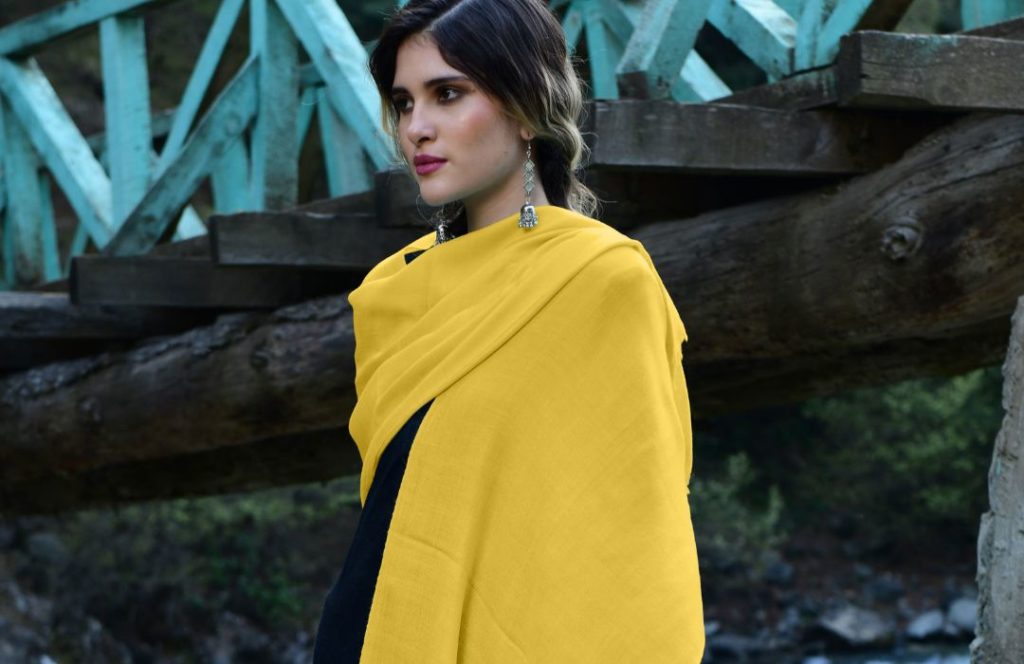
Cashmere scarves are the epitome of opulent accessories, sought after for their unmatched smoothness and beautiful warmth. These scarves, combine comfort and design in the ideal proportion, made from the silky hair of Cashmere goats and feel luxurious on the skin. These scarves are perfect for wrapping elegantly around the neck without adding bulk because cashmere is lightweight, allowing for both sophistication and utility. Cashmere scarves, whether in plain colours or patterned with dexterity, lend an air of luxury to any ensemble and go well with both formal and casual settings.
Cashmere scarves are not only aesthetically pleasing but also have outstanding insulating qualities that guarantee a snug cocoon in cold weather. These scarves are expertly made using age-old methods such as hand-weaving, highlighting the handmade quality, distinguishes Cashmere. Cashmere scarves are timeless purchases that hold up over time because of their adaptability, which goes beyond seasonal fads. An elegant sensation, follows the user everywhere they go is created by a Cashmere scarf, which is more than just a fashion accessory. It is a monument to the natural beauty and superb craftsmanship of Cashmere.
Pashmina Shawl
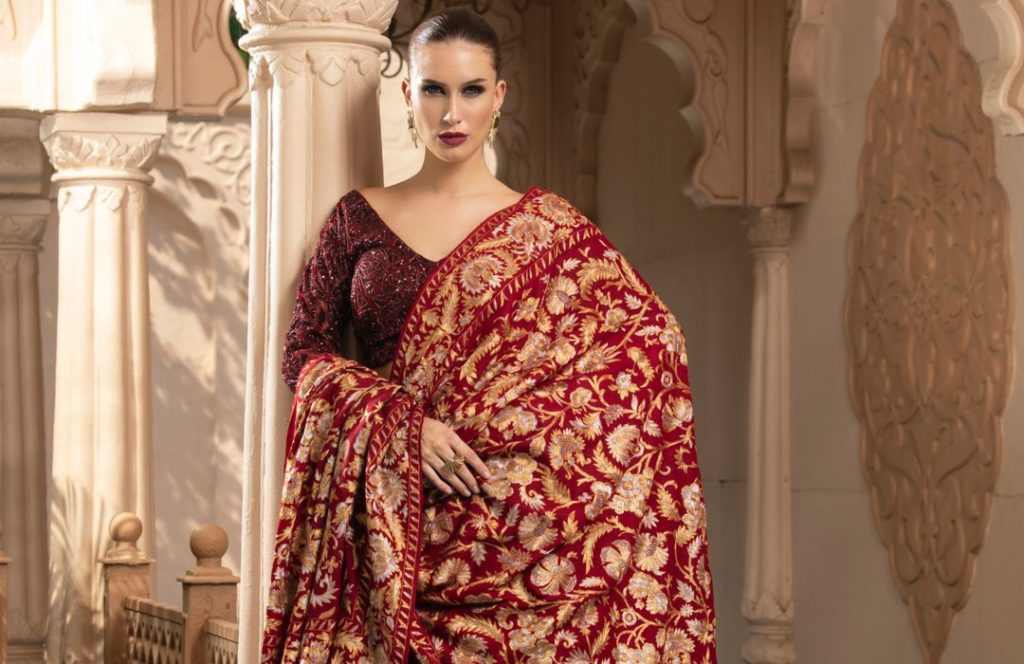
Pashmina shawls are the height of artisanal artistry and natural elegance, with an unmatched reputation for luxury and refinement. These gorgeous shawls are hand-spun and handwoven using fine wool called Pashm, which comes from the velvety underbelly of Himalayan Pashmina goats. Because of the unmatched warmth and softness of the resulting cloth, Pashmina shawls, highly sought-after for their capacity to surround the wearer in a cozy cocoon while projecting a timeless refinement.
The elaborate artwork that covers Pashmina shawls sets them apart, in addition to their rich texture. To create stunning patterns and designs, skilled artisans in places like Kashmir use age-old methods like Kani weaving and Sozni stitching. These shawls transcend beyond being simple accessories and instead become palpable representations of cultural history and skilful craftsmanship. Pashmina shawls represent the union of the finest natural fibers with the deft hands who craft them into wearable artwork, whether they are worn as a chic wrap for formal events or tossed carelessly over the shoulders.
Origin of Pashmina Craft
It all began when a saint from Persia travelled around the world. The Middle Eastern wise man was Mir Syed Ali Hamdani. To enhance the valley's natural beauty and disseminate the sacred word, the footsteps of a saint named Mir Syed Ali Hamdani travelled to Kashmir with 700 artisans. In the vicinity of Changhthanghi Ladakh, he propped his feet up. That's how the saint ended up appearing at Ladakh's Changhthangi Mountain. As he observed the natural world, he fixed his gaze on the magnificent goat. The wool's softness and fineness so impressed him that he used it to make socks, which he gave to the Sultan Zain-ul-Abideen of the Kashmir Valley. Seeing Cashmere wool's beauty, they proposed creating an industry.
Moreover, the royal kings of the medieval, as well as ancient times, draped the Pashmina Shawls for luxury and elegance. Noble kings used the Pashmina Shawls to glorify their presence. Akbar, the Mughal ruler was fond of the rich cultural Pashmina Art. Coming to the contemporary age, many influential people wear Cashmere accessories to amplify the styled look. Men walk in the presence of Pashmina Art and adapt its style to their glamour. From the eras gone by to the present eras, Cashmere accessories have come up with intricate designs and full elegance. In the present times, royal princes, celebrities, and local fashionistas have created an aura in the world of fashion by wearing the exquisite Pashmina.
Heritage of Pashmina Craft
The mysterious valleys of the Himalayas, especially those in Kashmir, are the source of the rich legacy of Pashmina craft. The exquisite wool from the underbelly of Changthangi goats, which are native to this untamed and hostile landscape, is where the legend of Pashmina starts. Through decades, the craft has been passed down, with artists painstakingly honing their abilities to turn the raw, fragile strands into the opulent fabric that has captivated the attention of people worldwide. The history of pashmina is evidence of the tenacity and inventiveness of the craftspeople who have spent generations perfecting and preserving this antiquated skill.
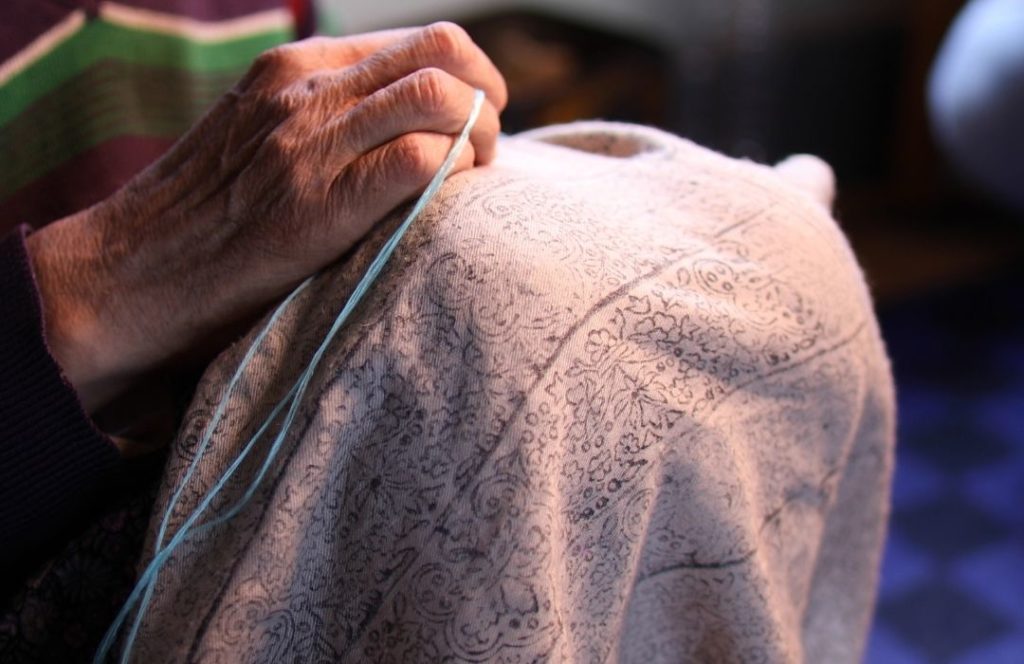
Pashmina is made using a complex process that includes hand stitching, weaving, and spinning, among other ancient techniques. These methods, passed down from master to apprentice, give every piece a special touch and a craftsmanship history. Pashmina's history encompasses not only the finished product but also the cultural importance and associated rituals of its production. The natural beauty of their surroundings serves as a source of inspiration for artisans, who then include symbolic themes that echo the rich history and mythology of the area.
Beyond its cultural roots, Pashmina heritage encompasses the socioeconomic fabric of the people in question. In Kashmir, families and communities have centred their identities around this skill, and the complex web of connections forged throughout the production process adds to the region's social cohesion. The worldwide demand for Pashmina is driving up the importance of preserving and promoting its heritage to leave future generations with not only a luxurious fabric but also a rich tapestry of customs, cultural tales, and skills that define the legacy of Pashmina craftsmanship.
Pashmina and Fashion
The pashmina has become a symbol of luxury and ageless elegance in the world of fashion, blending in effortlessly. Pashminas are versatile accessories that go well with both formal and casual attire because they are lightweight and silky. Designers who are well-known for their work regularly include pashmina in their collections, demonstrating how it can enhance any ensemble. Because of their comfort value as well as their visual appeal, pashmina wraps, shawls, and scarves have become sought-after wardrobe-essentials.
Beyond just being stylish, pashmina represents the fashion industry's growing shift towards using materials that are ethically and sustainably generated. Because pashminas are made by hand, they are in line with the principles of conscientious customers who emphasize the value of preserving traditional workmanship. Pashmina is a popular choice for people who value the convergence of style, comfort, and ethical fashion because of its ageless charm and cultural relevance. In a world where fashion fads come and go, the pashmina is a timeless and eco-friendly accessory that is appropriate for any season.
Contemporary Themes and Pashmina
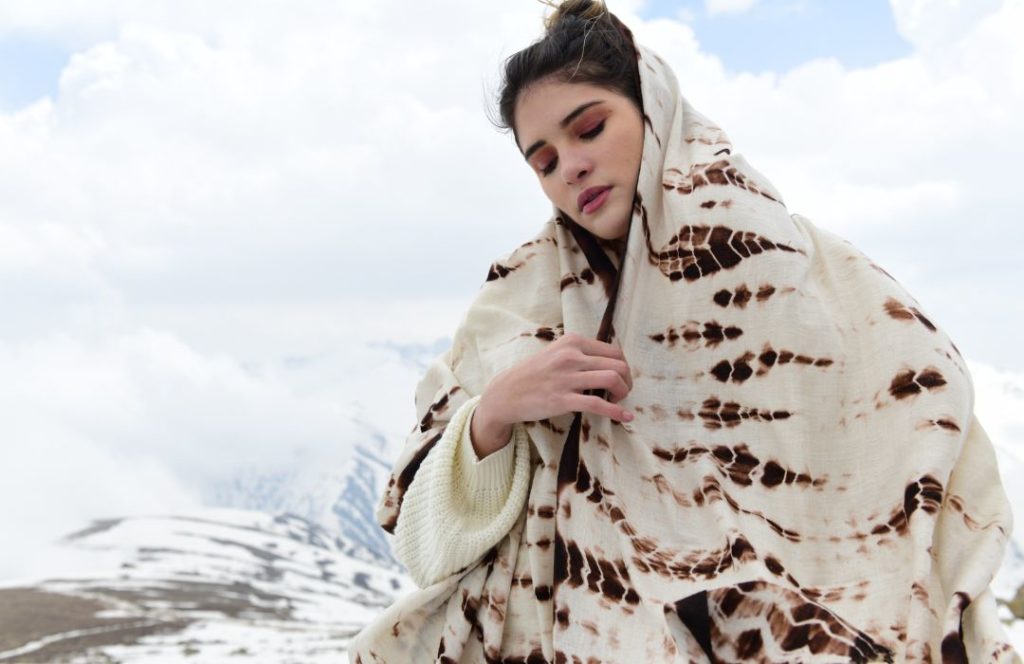
With its ageless appeal and ability to adapt to current styles without losing its traditional spirit, pashmina continues to enchant aficionados in the world of contemporary fashion. Modern designers frequently experiment with unique blends, patterns, and colours to give pashmina a modern edge. When looking for items that combine comfort and design, people who value both qualities highly choose Pashmina due to its lightweight and adaptable qualities. Whether worn dressy over jeans and a t-shirt or casually draped over an evening gown, Pashmina deftly negotiates the ever-changing world of modern fashion.
Furthermore, in the current day, Pashmina blends in perfectly with the growing emphasis on sustainability and ethical fashion. One factor in Pashmina's eco-friendly attractiveness is the handcrafted production method passed down through the centuries. Customers value the story behind their fashion selections more than ever, and Pashmina's rich cultural legacy and sustainable sourcing appeal to consumers looking for distinctive and ethically made items.
As a symbol of culture, pashmina also promotes intercultural understanding and the merger of global fashion. Designers and consumers alike find inspiration in various traditions, combining modern fashion with the classic beauty of pashmina. In a world where variety and cross-cultural influences are valued more and more, Pashmina's dynamic interaction between tradition and modernity puts it as more than just a fashion accessory—rather, as a cultural bridge connecting the past with the present.
Global Icon of Sustainable Fashion
As a symbol of ethical sourcing, luxury, and tradition, Pashmina has become a global icon of sustainable fashion. Because the fine wool from Changthangi goats mainly hand-harvested, benefits ethical shepherding techniques in the Himalayan region and doesn't hurt the goats, the manufacture of pashmina intrinsically aligned with sustainable principles. When opposed to mass production methods, the environmental effect of creating Pashmina reduced by the hand-spun and handwoven techniques used in the craft.
In addition to being produced sustainably, pashminas have a long history of being prized accessories supporting sustainable fashion. Because of their longevity and classic style, Pashmina goods, less likely to be thrown away, encouraging more thoughtful and long-lasting wardrobe selections. Because of the pashmina's widespread appeal, people are becoming more conscious of the need to spend money on classic, well-made items rather than impulsive purchases that worsen the environment.
The cultural relevance of pashmina extends to its status as a sustainable fashion symbol. Customers help preserve a centuries-old craft by purchasing Pashmina handicrafts. Thus, supporting the traditional craftsmanship of Pashmina artisans, and promoting economic sustainability for the communities engaged in its creation. The Pashmina is a classic purchase for individuals looking to infuse their wardrobes with both style and moral character. Because it is not only a magnificent item but also a representation of thoughtful and conscientious design decisions.
Pashmina - Fashion Trends around the world
The pashmina has melted into international fashion trends, bridging cultural divides to become a sought-after accessory everywhere. Its adaptability to different style preferences and fashion movements stems from its lightweight and versatile character. The rise of interest in ethically and sustainably sourced materials in recent years has brought Pashmina to the forefront. Thus, connected it to the expanding global trend of mindful fashion choices.
Designers regularly use pashmina shawls and scarves in both high-end and casual ensembles, as seen in worldwide fashion shows and collections. Pashmina's allure, found in its rich texture as well as in its elaborate designs and eye-catching hues, which go well with current fashions. Whether worn with luxury ensembles or casually draped over streetwear, pashmina keeps making an impression in the ever-evolving world of fashion.
Furthermore, the incorporation of Pashmina into a variety of style expressions is a result of cross-cultural influences in fashion. Pashmina seamlessly adapts to diverse aesthetics, exhibiting its worldwide appeal, from outfits influenced by bohemian style to minimalist chic. It continues to be a chic and adaptable piece of clothing appealing to people all around the world.
Pashmina - From the perspective of celebrities and influencers
Celebrities and influencers frequently feature pashmina in their ensembles to highlight its opulent appeal and adaptability to a worldwide audience. Notable individuals, ranging from Hollywood performers to style icons, are regularly observed adorning Pashmina scarves, shawls, and wraps in many contexts, both within and beyond the red carpet. Celebrities who want to look stylish and feel comfortable while making public appearances can't go wrong with a pashmina due to its lightweight yet warming properties.
The fact that celebrities regularly use their platform to highlight the exquisite craftsmanship. Also, cultural significance of pashmina contributes to the reason for its continued popularity. Because of its excellent textiles and distinctive themes that boost celebrity fashion. Pashmina goods are a choice among those who prefer a sophisticated yet understated look. Influencers, who wield great influence over fashion trends, contribute to the global appeal of Pashmina by incorporating it into their well-curated ensembles and showcasing its versatility with different styles.
Furthermore, Pashmina's connection to sustainability fits in nicely with the growing focus on making ethical fashion choices. Because Pashmina is handcrafted and ethically sourced, so frequently chosen by celebrities who support eco-friendly and sustainable practices. In the world of celebrities, the pashmina is a must-have item that represents classic elegance and dedication to conscientious fashion. Whether, worn elegantly as part of a formal ensemble or draped casually for a street-style approach.
Global Fashion Icon
Unquestionably, Pashmina has earned its reputation as a global fashion icon by eclipsing boundaries and enthralling style connoisseurs everywhere. Because of its unparalleled softness, low weight, and classic style, pashmina has come to represent elegance and sophistication. The fact that fashion designers, celebrities, and influencers from a wide range of countries and fashion scenes utilize it so frequently is proof of its universal appeal.
The key to Pashmina's widespread popularity is its adaptability. The Pashmina piece is versatile enough to work in a variety of fashion settings. Whether, worn as an elegant adornment for special events or draped casually over everyday clothing. For individuals who value artistry in fashion, the ancient techniques used to produce Pashmina, such as hand-spinning and hand-weaving, offer an artisanal touch.
In addition, Pashmina's compatibility with ethical and sustainable fashion trends adds to its appeal as a worldwide fashion symbol. The growing awareness for mindful fashion methods mainly reflects in Pashmina's handcrafted and responsibly sourced manufacture. Also, appeals to conscious consumers who prioritize eco-friendly choices.
From the catwalks of upscale fashion events to street-style fashion declarations, Pashmina keeps changing and adapting. Thus, securing its place as a classic and enduring worldwide fashion symbol. Fashion fans, captivated by Pashmina because of its ability to seamlessly combine traditional craftsmanship with new designs. Thus, making it a symbol of both cultural history and modern sophistication.
How does the world see Pashmina in Fashion?
The world of fashion is in awe of the lush and elegant cloth known as pashmina. The unmatched softness and elegance have captured the attention of people all over the world. Well-known for having originated in the Himalayas, specifically in Kashmir, Pashmina has crossed cultural boundaries to represent elegance and sophistication. Fashionistas all over the world are in awe of the fine workmanship that goes into making Pashmina clothing. Also, from the laborious hand embroidery that frequently adorns these pieces to the delicate hand-weaving method.
Pashmina, praised for its adaptability in the worldwide fashion scene, skillfully crafted with traditional craftsmanship with contemporary design. It is a year-round favourite because of its lightweight design, which works well for both formal and casual settings. Designers from all over the world use Pashmina in their designs, experimenting with cutting-edge cuts, patterns, and hues to further cement the garment's reputation as a classic. The world sees pashmina not just as an opulent ornament but also as evidence of handmade craftsmanship. Also, a heritage's continued appeal in the modern fashion business.
The globe acknowledges Pashmina's cultural significance and its role in bolstering local communities, in addition to its visual appeal. Pashmina is a labour-intensive procedure to cultivate, frequently employing trained artisans who have developed their craft over many generations. Sustainable sourcing methods and ethical fashion practices have raised Pashmina's profile. Also, created a global respect for both its genuineness and the communities who support its creation. Consequently, the pashmina represents a harmonious fusion of heritage, innovation, and responsible consumption on a worldwide level. Thus, serving as more than just a fashion statement.
Also read: The Future of Cashmere: Predictions and Projections for 2024
Pashmina.com brings forth a commitment to conscious Fashion
Within the dynamic realm of fashion, a specialized website surfaces as a fulcrum of ethical Pashmina fashion. Thus, representing a dedication to social responsibility, sustainability, and ethical behaviour. This platform acknowledges the rich cultural legacy Pashmina embodies and commits to maintaining the principles. This ethical Pashmina fashion business prioritizes supply chain transparency. Thus, making sure that all stages of the process—from obtaining raw materials to producing the finished product—comply with the values of ethical labour practices, environmental responsibility, and community development.
The promotion of traditional methods and artisanal craftsmanship lies at the heart of this platform's philosophy. The platform works with knowledgeable weavers and craftspeople to conserve traditional methods. Also giving local communities a stable source of income. By doing this, it encourages a closer bond between customers and the narratives that accompany each Pashmina creation. Raising consumer awareness of the industry's environmental effects and advising them to purchase classic pieces. The outlast fads are all part of the responsible Pashmina fashion movement.
Additionally, this platform challenges the quick fashion industry, which frequently results in wasteful practices. Thus, promoting the durability and classic beauty of pashmina. The portal encourages customers to embrace timeless pieces. Also, take a more thoughtful approach to fashion by highlighting the strength and adaptability of Pashmina. With these programs, the mindful Pashmina fashion platform hopes to rewrite the story of luxury. Thus, showing that extravagance can live in harmony with social responsibility. Also, benefit the fashion business as well as the world at large.
Also read: Pashmina across Cultures – Traditional Styles and Modern Influences